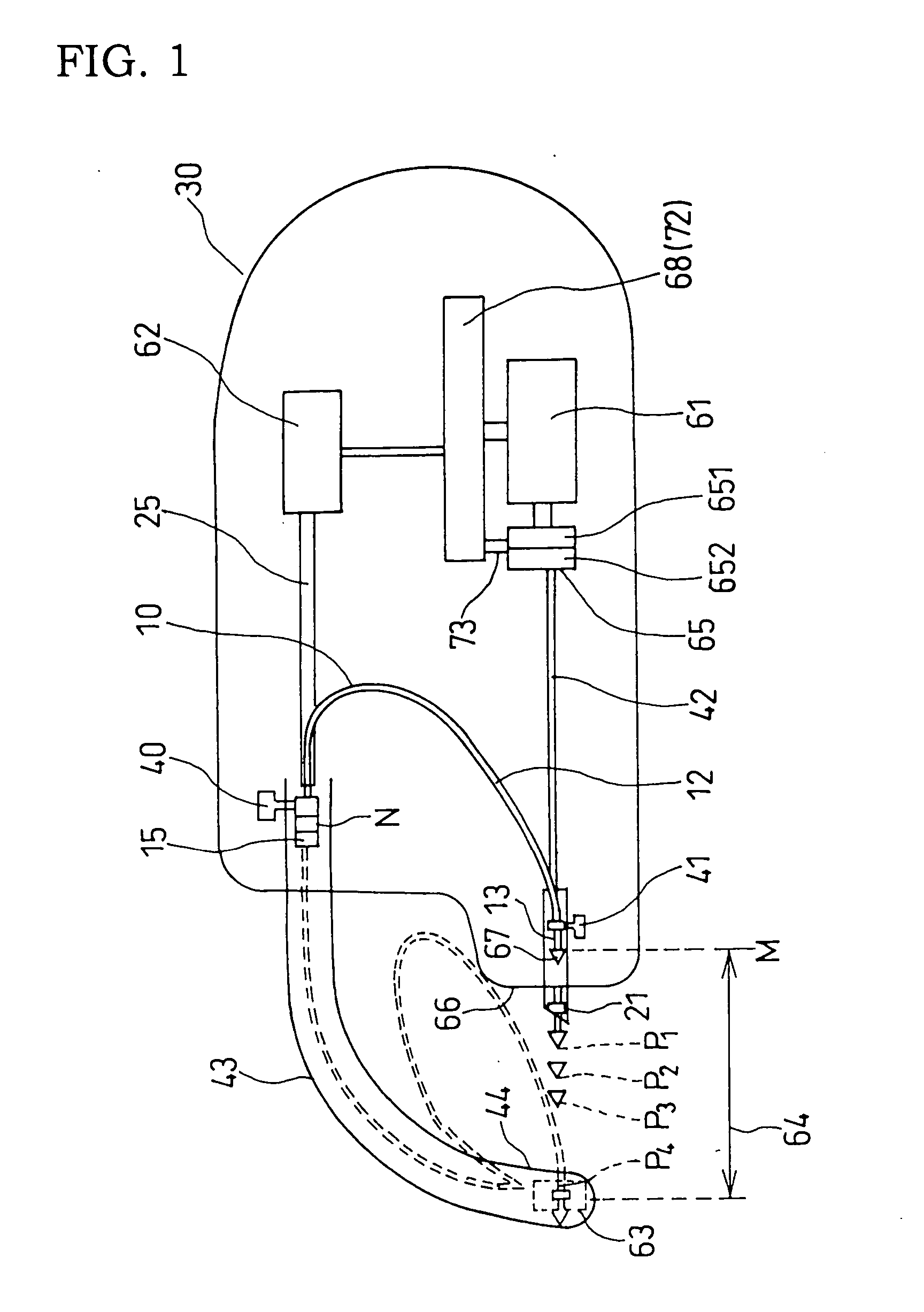In the case in which the protrusion length of the hollow pin 21 from the surface 26 of the loop pin connecting device 20 is made short, not only is holding the
label made difficult, but also it becomes difficult to pass the tip of the hollow pin through the
small hole or small opening for the purpose of passing the loop pin, thereby greatly lowering the work efficiency.
In the above-described loop pin connecting devices of the past, however, the loop pin out-pushing mechanism is one in whereby, for example, in response to operation of an operation lever by an operator pushes out each individual loop pin forward so that there is mutual
mating between the insertion head portion and the socket portion in front of the loop pin connecting device, and if the operator is not accustomed to operating the loop pin connecting device, because of the complexity of the out-pushing mechanism of the loop pin connecting device, because of potential looseness in the above-noted device and because of the chance that, although the operator had thought that the operation lever was pulled sufficiently, however, actually it did not result in the insertion head portion being completely fed out to the target standard mating position, but rather stopped at a point immediately before the actual mating position, there are many cases in which the insertion head portion 13 and the socket portion 15 are seemed to be mated but there is not a complete mating, and cases in which there is either no mating or insufficient mating.
The above-noted conditions are thought to be caused by the problem of the operator not pulling the operation lever back fully up to its final position, but rather hesitating somewhat and releasing pressure at the final stage.
In a case in which there is an incomplete mating between the loop pin insertion head portion and socket portion as noted above, the operator, mistakenly assuming that there has been complete mating between the insertion head portion and the socket portion, attempts to remove the loop pin from the loop pin connecting device and, as a result, an operation is necessary to remove the loop pin from the loop pin connecting device, this being an operation performed by the operator that is not easy to perform and requires time to perform.
In addition, if the operator realizes that the loop pin mating operation has not been completed properly, the operator will often operated the lever once again with the loop pin remaining in the loop pin connecting device, thereby resulting in the out-pushing of a new loop pin with the previous loop pin remaining in the loop pin connecting device, leading to a jammed condition by contact or interference between the previous loop pin and the new loop pin, thereby requiring a complex and troublesome jam-clearing operation that greatly reduces the operating efficiency.
In the loop pin connecting devices of the past, because the extension or protrusion length was fixed, in addition to the problem of being able to use the loop pin connecting device with a particular product, in order to be able to accommodate a plurality of types of products, it was necessary to provide beforehand a plurality of loop pin connecting devices having extensions or protrusions of mutually differing lengths, thereby leading to an increase in cost.
Furthermore, in a loop pin connecting device of the past, because the extension or protrusion was made of
metal in order to maintain its strength, when the end part of the extension or protrusion came into contact with the hole, opening, space, or gap in the product, there were cases in which the surface of the product was damaged, thereby causing the item to lose its value as a product.
 Login to View More
Login to View More  Login to View More
Login to View More 


